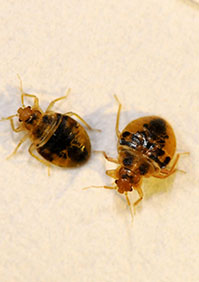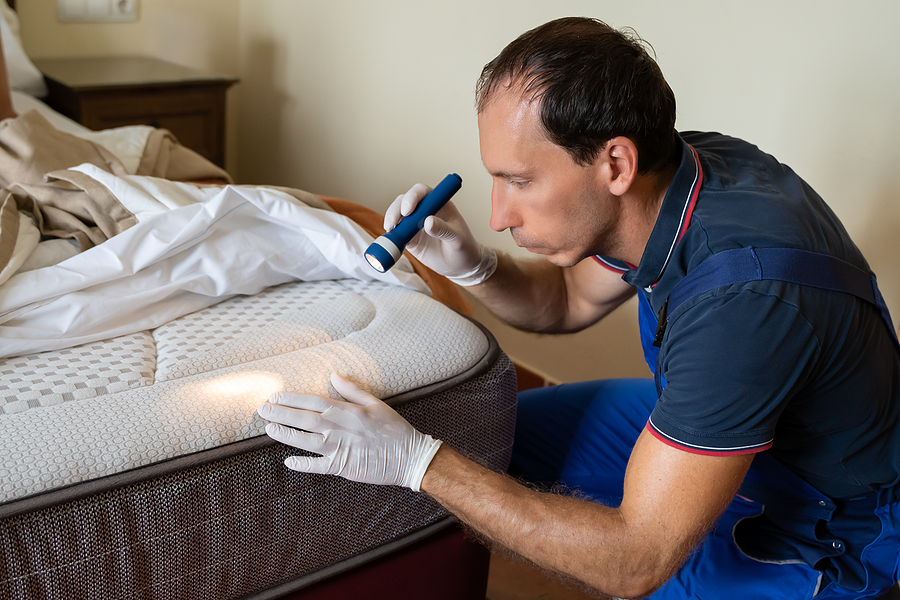How to Identify Bed Bug Bites and Prevent Future Infestations
How to Identify Bed Bug Bites and Prevent Future Infestations
Blog Article
Obtain Enlightened Regarding the Kinds Of Pest Control Techniques and Their Advantages for Home Owners
Understanding the different bug control methods readily available to homeowners is crucial for effective parasite monitoring. Homeowners who are educated can make tactical selections that not only address pest issues but likewise enhance the general quality of their living atmosphere.
Chemical Bug Control Approaches
Chemical insect control methods are a crucial part of incorporated insect monitoring techniques for house owners looking for efficient options to pest infestations. These approaches entail the application of chemical materials made to remove or hinder bugs that threaten personal residential or commercial property, health, and convenience. Typical chemicals used consist of insecticides, fungicides, herbicides, and rodenticides, each tailored to target details insects.
The key benefit of chemical bug control is its quick efficiency; lots of formulations give instant outcomes, minimizing pest populations substantially in a short time. In addition, advances in chemical formulations have actually caused items that are extra eco-friendly and have lower poisoning degrees for non-target organisms when used properly.

Biological Bug Control Techniques
Natural parasite control approaches have acquired prestige as property owners seek safer and extra lasting alternatives to typical chemical methods. Organic pest control strategies make use of natural predators, parasites, or microorganisms to manage insect populaces efficiently. This technique is not only environmentally pleasant yet likewise minimizes the danger of harm to non-target varieties, consisting of advantageous insects and wildlife.
Among the most common organic control methods entails presenting all-natural killers right into the atmosphere. For example, ladybugs can be utilized to regulate aphid populaces, while nematodes target soil-dwelling bugs like grubs. In addition, parasitoids-- organisms that reside on or within a host-- can be employed to control certain pest types by laying eggs inside them, inevitably resulting in their demise.
An additional strategy is the use of biopesticides, which are stemmed from natural products such as plants, minerals, or germs (bed bug exterminator). These products can successfully target bugs while posturing marginal threat to human beings and animals. Generally, biological pest control strategies provide homeowners with a reliable ways of parasite management that straightens with ecological principles, advertising a healthier living setting while minimizing dependence on artificial chemicals
Mechanical Insect Control Approaches
Mechanical insect control approaches include a selection of techniques that literally prevent or remove bugs without making use of chemicals. These methods are particularly beneficial for home owners seeking eco pleasant choices while guaranteeing the safety and security of their space.
One typical technique is the usage of obstacles, such as catches, screens, and internet, which avoid insects from getting in homes or particular locations. Mounting window displays can successfully maintain bugs out, while making use of physical obstacles around gardens can discourage bigger pests like deer or rabbits. Furthermore, mechanical traps created for rats can catch and get rid of these insects without the demand for harmful compounds.
Another reliable approach includes using brooms and vacuums to get rid of pests straight from surfaces. Routine cleaning and upkeep can considerably reduce parasite populations by getting rid of food sources and concealing places. Using devices like ultrasonic bug repellents can hinder various bugs through audio waves that are undesirable to them but faint to humans.
Cultural Insect Control Practices
Social pest control techniques concentrate on customizing the setting and monitoring techniques to produce problems that are much less for pest problems. These practices are fundamental in keeping a well balanced ecological community and lowering the dependence on chemical treatments. By altering agricultural practices, home owners can effectively discourage bugs while advertising plant health.
One common getting rid of fleas method consists of plant rotation, which interferes with the life cycles of pests by transforming the kinds of plants expanded in a specific area (bed bug exterminator). This not only reduces pest populaces but additionally enhances soil wellness. In addition, intercropping-- growing diverse plants in proximity-- can confuse bugs and reduce their ability to find their recommended host plants
Water management is another essential element of social methods. Proper irrigation methods can stop standing water, which acts as a breeding place for mosquitoes and various other insects. Moreover, preserving sanitation in and around the home, such as on a regular basis my company removing debris and food waste, can considerably reduce parasite tourist attraction.
Incorporating these social practices into a detailed bug monitoring strategy permits property owners to produce an environment that naturally prevents bugs, thereby improving the effectiveness of various other control methods while promoting lasting horticulture and landscape design.

Integrated Bug Administration Approaches
Integrated Pest Administration (IPM) represents an alternative strategy that combines various methods to successfully manage pest populations while reducing ecological impact. This approach integrates biological, social, physical, and chemical practices to attain sustainable bug control. By analyzing pest populations and their natural opponents, IPM stresses monitoring and identifying parasites prior to implementing control procedures.
Among the core concepts of IPM is making use of thresholds, which develop the level of bug activity that requires intervention. This guarantees that treatments are used only when necessary, decreasing the reliance on chemical pesticides. Biological control techniques, such as presenting natural predators or bloodsuckers, operate in combination with social practices like crop turning and habitat control to interfere with pest life cycles.
In addition, IPM motivates making use of least-toxic chemical options when treatment is necessary, prioritizing products that pose very little threat to non-target microorganisms and the environment. For homeowners, embracing IPM comes close to not only boosts the efficiency of pest monitoring however likewise promotes a healthier living atmosphere, promoting biodiversity and decreasing chemical exposure. Inevitably, IPM empowers home owners to make enlightened decisions that stabilize bug control with eco-friendly obligation.
Verdict
To conclude, understanding the various parasite control methods empowers homeowners to make enlightened choices pertaining to pest administration. Each technique-- chemical, biological, mechanical, cultural, termite pest control and incorporated insect monitoring-- uses distinct benefits that provide to different requirements and preferences. By choosing ideal approaches, homeowners can efficiently take care of parasite populaces while decreasing wellness threats and ecological impacts. This educated technique adds to a healthier living setting, promoting overall health for family pets and families alike.
Recognizing the different parasite control techniques offered to home owners is crucial for efficient insect monitoring.Chemical bug control techniques are an important component of incorporated bug administration strategies for house owners looking for efficient services to pest invasions. On the whole, biological insect control methods supply homeowners with a reliable methods of pest management that lines up with environmental concepts, promoting a healthier living environment while minimizing dependence on artificial chemicals.
Cultural pest control techniques concentrate on customizing the setting and management techniques to develop conditions that are much less helpful to pest problems.In final thought, recognizing the various insect control approaches encourages house owners to make educated choices regarding pest monitoring.
Report this page